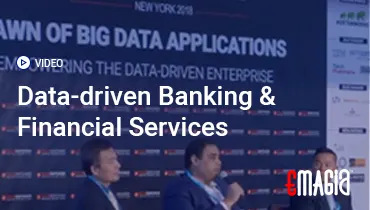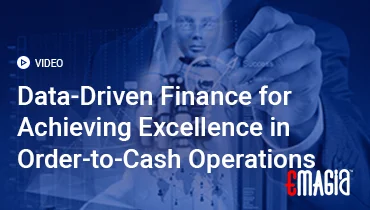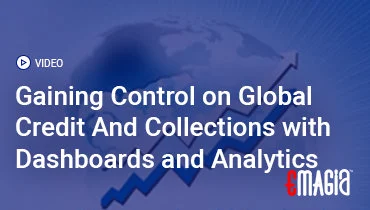Welcome to the future of financial operations. In an increasingly digital world, the archaic process of manual invoicing is a relic of the past. This comprehensive guide will take you on a deep dive into the world of electronic invoice processing, a transformative approach that is reshaping how businesses manage their finances. We will explore the core concepts, undeniable benefits, and critical steps to successful implementation, ensuring your business stays ahead of the curve.
1. Understanding the Foundation: What is Electronic Invoice Processing?
In this foundational section, we’ll establish a crystal-clear definition and context for electronic invoice processing, distinguishing it from simple digital files.
1.1 Defining Electronic Invoice Processing
- A fundamental shift: Electronic invoice processing is more than just sending a PDF. It’s the automated, end-to-end digital exchange of invoice data in a structured format, enabling seamless communication between systems.
- Beyond the file: We’ll clarify why a PDF or a scanned image is not a true e-invoice. A true e-invoice contains machine-readable data, allowing for direct and automated integration with accounts payable and ERP systems.
- The complete cycle: We’ll trace the journey of an electronic invoice from creation to archiving, highlighting the key differences from traditional paper-based methods.
1.2 The Evolution of E-invoicing
- From paper to pixels: We’ll briefly cover the historical transition from physical paper invoices to today’s advanced digital systems.
- The structured data revolution: We will discuss the pivotal role of structured data formats like XML, UBL, and EDI in making e invoicing truly automated and efficient.
- Global mandates as a catalyst: We’ll explain how governmental e-invoicing regulations and mandates worldwide are accelerating this digital transformation.
2. The Unassailable Benefits of Electronic Invoicing
This section will detail the overwhelming advantages of adopting an electronic invoicing system, showcasing why it’s a strategic necessity, not just a technological upgrade.
2.1 Strategic Cost Reduction and Efficiency Gains
- Direct cost savings: We’ll break down how moving to e-invoicing eliminates expenses related to paper, printing, postage, and physical storage.
- Time is money: We’ll quantify the time saved by automating manual data entry, reconciliation, and approval workflows. This increased productivity is a major benefit.
- Streamlined processes: We will explain how an e invoicing process is fundamentally faster and more efficient, reducing invoice turnaround times and freeing up staff for higher-value tasks.
2.2 Enhanced Accuracy and Data Quality
- Minimizing human error: We’ll discuss how automated data capture and validation in an electronic invoice system drastically reduces the risk of manual data entry mistakes.
- The power of structured data: We’ll show how structured data ensures consistency and accuracy across all transactions, improving the reliability of financial records.
- Real-time visibility: We’ll highlight the benefit of real-time visibility into invoice status and payment history, enabling better financial forecasting and decision-making.
2.3 Bolstering Security and Fraud Prevention
- Securing the exchange: We’ll explain how electronic invoice processing platforms use secure protocols, encryption, and digital signatures to protect sensitive financial data.
- Combating fraud: We will detail how these systems help prevent invoice fraud by validating the authenticity and origin of each e-invoice.
- Robust audit trails: We’ll discuss the importance of digital audit trails for compliance and security, making it easier to track the entire invoice lifecycle.
2.4 Achieving Flawless Compliance and Regulatory Readiness
- Navigating global complexity: This subsection will explain how an effective electronic invoicing system helps businesses comply with a patchwork of country-specific e-invoicing regulations.
- Stay ahead of mandates: We’ll discuss how implementing a robust system prepares your business for future e-invoicing mandates and compliance requirements.
- Simplifying audits: We’ll emphasize how structured, digitally archived e invoices make the audit process faster and more straightforward.
3. The E-invoicing Landscape: Systems, Standards, and Technology
This section will provide a detailed overview of the technical components and standards that underpin the modern e-invoicing ecosystem.
3.1 Key Components of an Electronic Invoice System
- Data capture and validation: We’ll explain the technology behind capturing and verifying invoice data, including intelligent data extraction tools.
- Workflow automation: We’ll describe how automated workflows route invoices for approval, match them to purchase orders, and flag exceptions.
- Integration with ERP and accounting software: We’ll discuss the critical role of seamless integration with existing systems to ensure a single source of truth for all financial data.
3.2 Global Standards and Frameworks
- Peppol: We’ll dedicate a deep dive to the Pan-European Public Procurement Online (Peppol) network, explaining how it provides a secure, interoperable framework for e-invoicing.
- UBL (Universal Business Language) and EDIFACT: We’ll explore these foundational standards for structured data exchange and their importance in a global context.
- Country-specific standards: We’ll mention key standards like ZUGFeRD in Germany or Factur-X in France to illustrate the diversity of the global landscape.
3.3 Emerging Technologies Shaping E-invoicing
- Artificial Intelligence and Machine Learning: We’ll explain how AI and ML are being used to detect anomalies, automate complex invoice matching, and improve data accuracy.
- Blockchain for security and transparency: We’ll touch on the potential of blockchain technology to create an immutable, transparent record of invoice transactions, further reducing fraud.
- Robotic Process Automation (RPA): We will show how RPA bots can handle repetitive tasks within the e invoicing process, further boosting efficiency.
4. A Step-by-Step Guide to Implementing an Electronic Invoicing System
This section provides a practical, actionable roadmap for businesses ready to make the transition to modern electronic invoicing.
4.1 Phase 1: Strategic Planning and Assessment
- Assessing your current state: We will guide businesses on how to evaluate their existing invoice process to identify pain points and areas for improvement.
- Defining your needs: We’ll provide a checklist for defining business requirements, including transaction volume, regulatory obligations, and integration needs.
- Building a business case: We will explain how to build a compelling case for implementing e invoicing, focusing on the return on investment (ROI).
4.2 Phase 2: Vendor Selection and System Integration
- Choosing the right e-invoicing solution: We’ll provide criteria for selecting a vendor, including their expertise, global coverage, security features, and scalability.
- The importance of integration: We’ll reiterate the necessity of a solution that integrates seamlessly with your existing ERP, accounting, or supply chain management systems.
- Data migration best practices: We will outline the steps for a smooth and secure migration of historical invoice data to the new electronic invoice system.
4.3 Phase 3: Deployment, Training, and Go-Live
- Training your team: We will stress the importance of comprehensive training for accounts payable and other relevant departments to ensure user adoption and success.
- Pilot testing and feedback: We’ll recommend running a pilot program with a small group of users to test the system and iron out any issues before a full rollout.
- Monitoring and optimization: We’ll advise on the importance of continuously monitoring performance metrics like invoice processing time and error rates to optimize the system post-go-live.
5. Global E-invoicing Mandates and Compliance
This section is dedicated to the complex and ever-changing world of e-invoicing regulations and e-invoicing compliance, a critical aspect of international business.
5.1 The Global Push for E-invoicing Mandates
- Understanding CTC models: We will explain the concept of Continuous Transaction Controls (CTCs), where governments require real-time or near-real-time validation of invoices.
- Regional spotlights: We will provide specific examples of mandatory e-invoicing in key regions, such as the European Union (Peppol), Latin America (Factura Electrónica), and Asia (e.g., India’s GST system).
- Compliance models: Clearance vs. Post-Audit: We’ll differentiate between the two main models, explaining how each impacts business operations and the e invoicing process.
5.2 Key Compliance and Legal Considerations
- Authenticity and integrity: We will discuss the legal requirements for ensuring the authenticity and integrity of an e-invoice through digital signatures and other security measures.
- Data retention requirements: We’ll cover the varying legal requirements for storing electronic invoices and associated records for audit purposes, which can range from 5 to 10 years depending on the jurisdiction.
- Interoperability challenges: We’ll address the challenges of connecting with different government platforms and standards, emphasizing the need for a solution that can handle this complexity.
6. Beyond the Basics: Advanced Electronic Invoice Management
This section will delve into the advanced functionalities and strategic insights that elevate electronic invoice management from a simple process to a core business advantage.
6.1 Advanced Features of Modern Solutions
- AI-powered invoice matching: We’ll discuss how AI can automate three-way matching (invoice, purchase order, and goods receipt) with incredible accuracy, flagging only true exceptions.
- Dynamic approval workflows: We’ll explain how smart systems can dynamically route invoices based on amount, department, or supplier, accelerating the approval cycle.
- Comprehensive dashboards and analytics: We’ll highlight the value of real-time dashboards that provide actionable insights into cash flow, supplier performance, and compliance status.
6.2 The Future of Electronic Invoices
- Direct B2C e invoicing: We’ll look ahead to a future where e-invoicing becomes standard for consumer transactions, not just business-to-business.
- Integrated payment solutions: We will discuss the seamless integration of payments into the e invoicing process, enabling faster, more secure payment cycles.
- Sustainability and ESG reporting: We’ll touch on how the shift away from paper-based invoices contributes to a company’s environmental, social, and governance (ESG) goals.
The Emagia Advantage: Transforming Finance with Intelligent Automation
Emagia offers a powerful, AI-driven platform that elevates the entire financial process, from cash flow to credit and beyond. Their intelligent automation solutions are designed to handle the complexities of modern finance, including the intricate world of global e-invoicing and accounts payable automation. Emagia’s platform helps businesses by:
- Simplifying Complex E-invoicing Mandates: Navigating the labyrinth of global e-invoicing regulations is a key challenge for multinational corporations. Emagia’s platform provides a centralized hub that manages compliance across multiple countries and formats, ensuring that every e-invoice meets local and international requirements without manual intervention.
- Accelerating Cash Flow with AI-Powered Automation: Beyond just processing electronic invoices, Emagia leverages AI to automate the entire order-to-cash cycle. This includes intelligent data capture, automated reconciliation, and predictive analytics that help businesses forecast cash flow and take proactive steps to improve it.
- Providing a Unified, Real-Time View: With Emagia, you get a single, real-time dashboard for all your financial operations. This powerful visibility allows you to track every e-invoice and payment status instantly, eliminating the need for fragmented systems and manual reporting. Their solution turns raw data into actionable insights for smarter, faster decision-making.
What is e-invoicing and how does it differ from a regular invoice?
A true e-invoice is not just a digital document like a PDF, but a structured digital file (e.g., XML) that can be automatically processed by the recipient’s computer system without manual data entry. A regular invoice, whether paper or a simple PDF, requires manual handling and data entry, which is prone to errors.
What are the key benefits of electronic invoicing?
The main benefits include significant cost savings by eliminating paper and postage, improved efficiency and productivity, enhanced data accuracy, greater security and fraud prevention, and simplified compliance with government regulations.
Are electronic invoicing mandates common globally?
Yes, the number of countries with mandatory e-invoicing is growing rapidly. Many governments are implementing mandates as a way to increase tax transparency, reduce fraud, and digitize their economies.
What are the common standards for e-invoicing?
Some of the most widely used standards and frameworks include PEPPOL (Pan-European Public Procurement Online), UBL (Universal Business Language), and EDI (Electronic Data Interchange).
How does an electronic invoice system help with compliance?
An effective electronic invoice system can be configured to automatically adhere to specific regional and national e-invoicing regulations. It ensures the correct data is included, the format is valid, and the invoice is submitted to the appropriate government or network platform.
How long does it take to implement e-invoicing?
The implementation timeline can vary greatly depending on the size and complexity of your business, the solution chosen, and the level of integration required with existing systems. It can range from a few weeks for smaller businesses to several months for large enterprises.
What is the difference between B2B, B2G, and B2C e-invoicing?
B2B e-invoicing is the exchange of electronic invoices between businesses. B2G e-invoicing is for businesses invoicing government entities. B2C e-invoicing is for businesses invoicing consumers, which is a newer and less common mandate.
What is a clearance model in e-invoicing?
In a clearance model, an e-invoice must be validated and cleared by a government authority before it can be sent to the recipient. This is often done in real-time or near-real-time.
Can small businesses benefit from e-invoicing?
Absolutely. While many mandates target large businesses, small and medium-sized businesses can gain significant benefits in efficiency, cash flow, and cost savings by adopting e-invoicing.
What should I look for in an e-invoicing solution?
Look for a solution that offers easy integration with your current software, ensures compliance with all relevant regulations, has strong security features, and is scalable to grow with your business.



